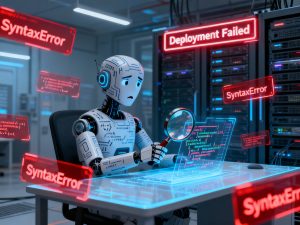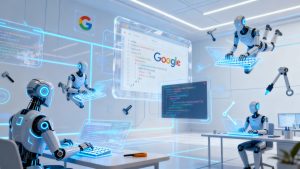The landscape of AI-driven applications is rapidly evolving, with developers seeking robust solutions to connect generative AI agents to production-grade databases. The Gen AI Toolbox for Databases, now enhanced through a partnership with Hypermode, offers a powerful open-source server that bridges this gap. This integration enables seamless development, deployment, and management of generative AI tools capable of secure, scalable, and observable database interactions.
Expanding Database Support with Gen AI Toolbox
Gen AI Toolbox for Databases is designed to simplify the process of building agent-based AI applications that interact with a variety of databases. It currently supports:
- AlloyDB for PostgreSQL (including AlloyDB Omni)
- Spanner
- Cloud SQL for PostgreSQL, MySQL, and SQL Server
- Self-managed MySQL and PostgreSQL
- Neo4j (with community contributions)
- Dgraph (in partnership with Hypermode)
This broad compatibility allows developers to leverage the best database technologies for their specific use cases, all within a unified, open-source framework.
Dgraph: The AI-Ready Graph Database
Dgraph, maintained by Hypermode, stands out as a fully open-source, horizontally scalable graph database tailored for AI applications. Its key features include:
- Real-time query performance through distributed, parallel processing
- Effortless horizontal scaling to accommodate growing datasets and user bases
- AI-native capabilities such as vector indexing, search, and storage for multiple embeddings per node
- Flexible property graph modeling, ideal for complex relationships in recommendation engines and knowledge graphs
Key Benefits of the Dgraph and Gen AI Toolbox Integration
The collaboration between Dgraph and Gen AI Toolbox delivers several advantages for developers:
- Streamlined Setup: Developers can configure Dgraph as a source and utilize Dgraph-DQL tools with minimal effort, allowing them to focus on building AI features rather than managing connectivity.
- Production-Ready Infrastructure: The toolbox automates operational tasks like connection pooling, authentication, and resource allocation, supporting zero-downtime deployments and integration with common authentication providers.
- Enterprise-Grade Observability: Built-in logging, metrics, and tracing provide deep insights into database operations, simplifying debugging and monitoring.
Real-World Application: E-Commerce Product Search and Recommendations
To illustrate the power of this integration, consider the development of a product search and recommendation agent for a large e-commerce platform. Modern e-commerce systems require:
- Efficient product search
- Personalized recommendations based on user behavior
- Natural language interaction with product catalogs and reviews
A polyglot database approach is employed:
- AlloyDB for PostgreSQL stores transactional data such as product catalogs, purchase histories, and inventory.
- Dgraph powers the knowledge graph for personalized recommendations and review analysis.
- LangChain orchestrates agent workflows and large language model (LLM) interactions.
- Gen AI Toolbox connects the agent to both databases, providing a robust infrastructure.
Building a Product Knowledge Graph with Dgraph
The foundation of the e-commerce agent is a knowledge graph modeled in Dgraph. This graph represents products, users, and reviews as nodes, with relationships such as purchased_by, reviewed_by, and similar_to. Each node and relationship can have properties, enabling rich, interconnected data modeling.
Dgraph’s native query language, DQL, is inspired by GraphQL and optimized for graph operations. It supports advanced features like reverse edges, cascading filters, and efficient variable binding, making it ideal for recommendation engines and social networks.
Example: Personalized Product Recommendations
By traversing the knowledge graph, the agent can identify products purchased by similar users or those with related features. DQL enables these complex queries to be executed efficiently, supporting real-time, personalized recommendations.
Defining Tools with Gen AI Toolbox
Tools in the Gen AI Toolbox are defined using YAML, specifying parameterized database queries. Each tool includes input and output descriptions, guiding the LLM in selecting the appropriate tool for a given task. This setup allows seamless integration of both PostgreSQL and Dgraph queries within the same agent workflow.
Example Tool Definition
A tool for retrieving product reviews from Dgraph might be defined as follows:
textsources:
my-dgraph-source:
kind: dgraph
dgraphUrl: http://localhost:8080
tools:
get-product-reviews:
kind: dgraph-dql
source: my-dgraph-source
statement: |
query all($asin: string){
productReviews(func: type(Product), first: 10) @filter(eq(Product.asin, $asin )) {
uid
Product.asin
Product.reviews {
Review.title
Review.text
Review.rating
}
}
}
isQuery: true
timeout: 20s
description: |
Use this tool to find product reviews for a specific product.
parameters:
- name: asin
type: string
description: The product ASIN
Building the AI Agent with LangChain
LangChain provides the framework for constructing the AI agent. The agent connects to the Gen AI Toolbox server, loads the available toolset, and utilizes a memory component for chat history. By leveraging Google’s Gemini Pro LLM via Vertex AI, the agent can interpret user queries, determine the necessary context, and select the appropriate tool to fulfill the request.
The agent’s workflow includes:
- Connecting to the toolbox server
- Loading the toolset
- Managing conversation history
- Utilizing Gemini Pro for natural language understanding
- Executing database queries and returning results to the user
Delivering a Seamless AI-Powered Shopping Experience
The result is a sophisticated, AI-powered shopping assistant capable of:
- Understanding and responding to natural language product searches
- Providing detailed product information from transactional databases
- Generating personalized recommendations using the knowledge graph
- Surfacing relevant product reviews to inform purchase decisions
All of this is achieved while the Gen AI Toolbox manages the complexities of database connectivity, authentication, and query execution, allowing developers to focus on delivering exceptional user experiences.
By integrating Gen AI Toolbox with Dgraph, organizations can unlock new possibilities in AI-driven applications, from e-commerce to social networks and beyond, with scalable, secure, and intelligent database interactions.
Read more such articles from our Newsletter here.



